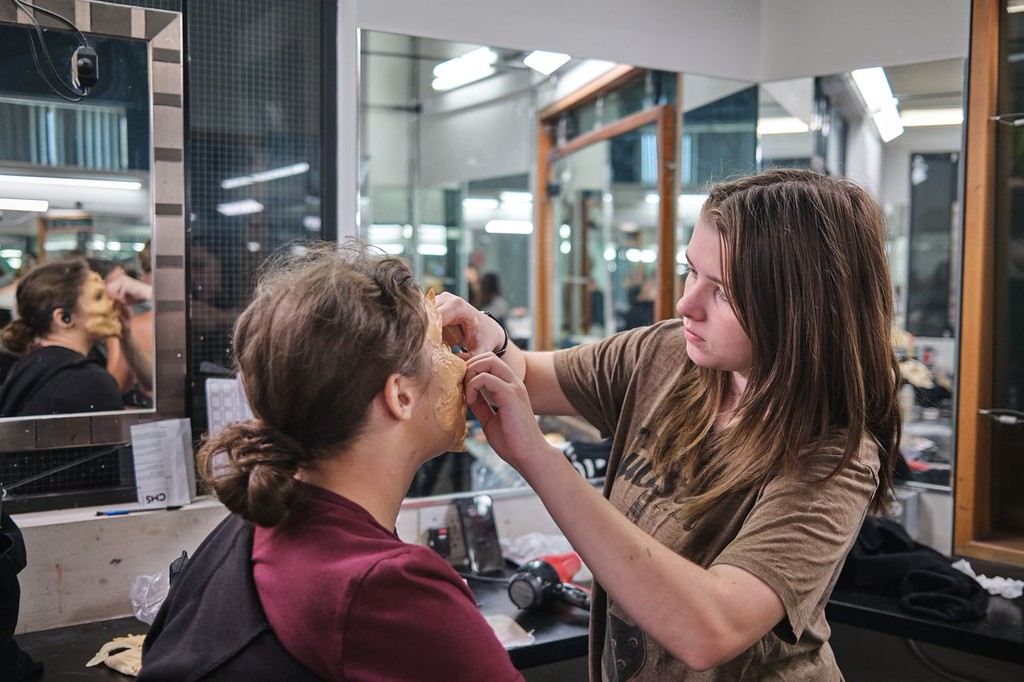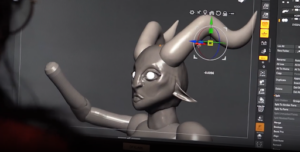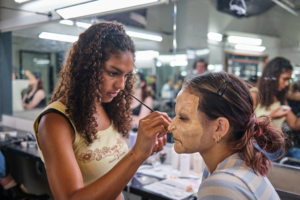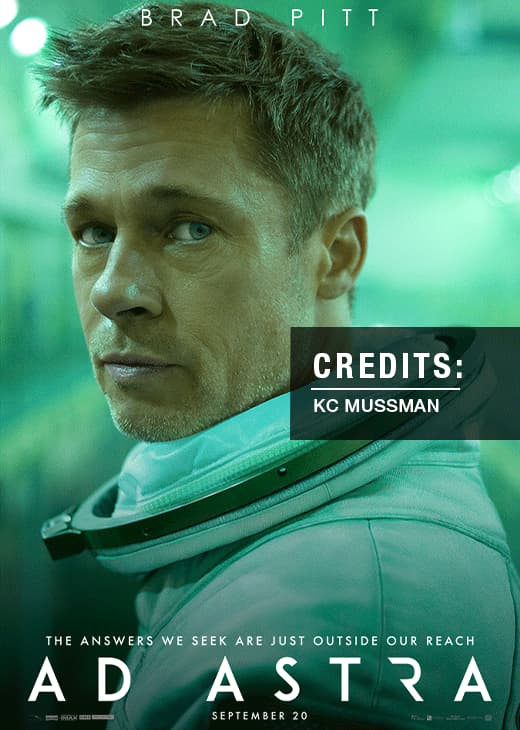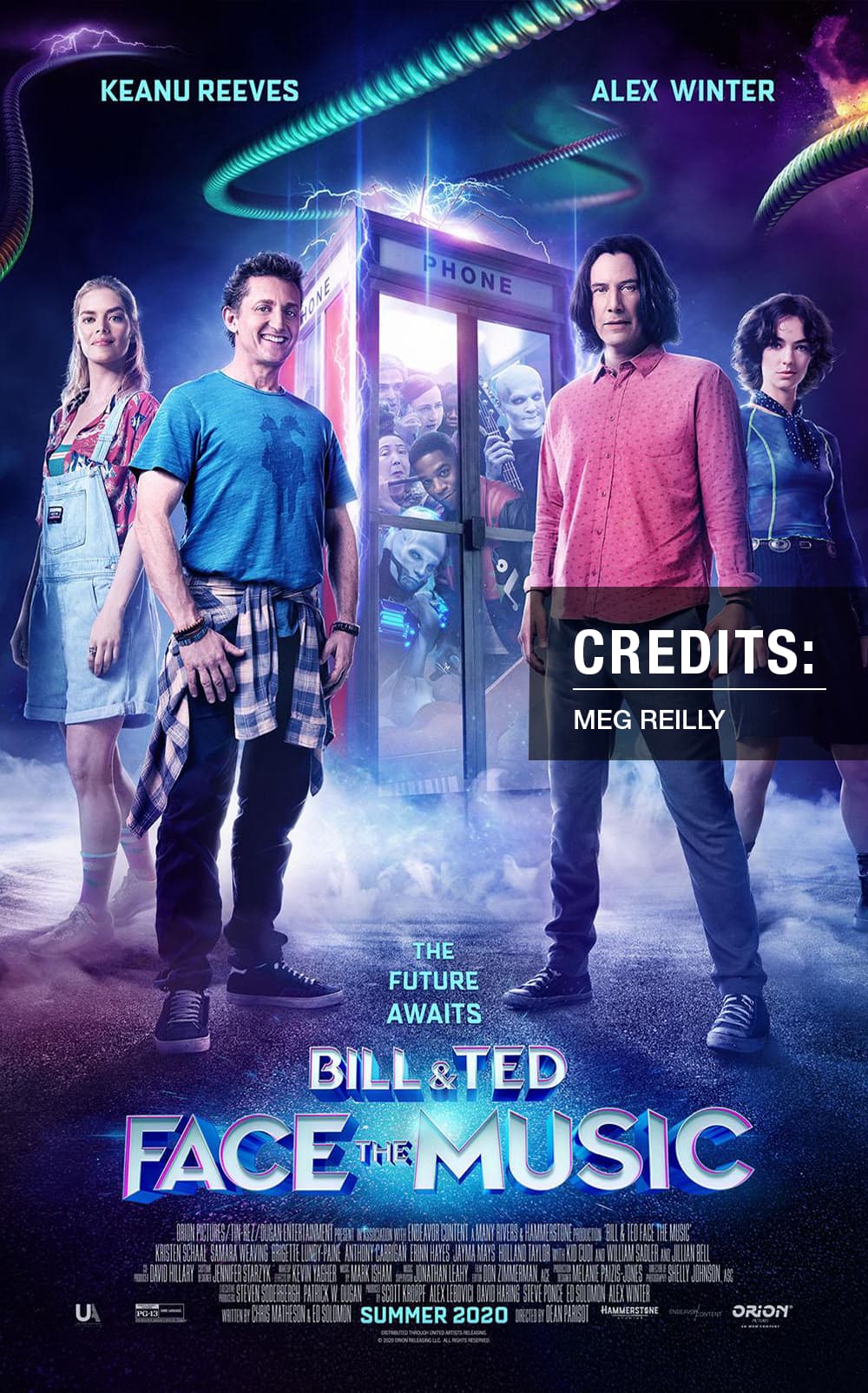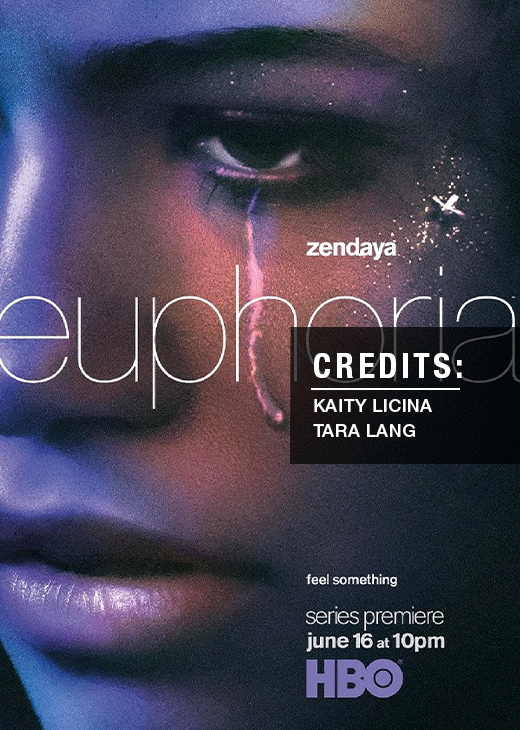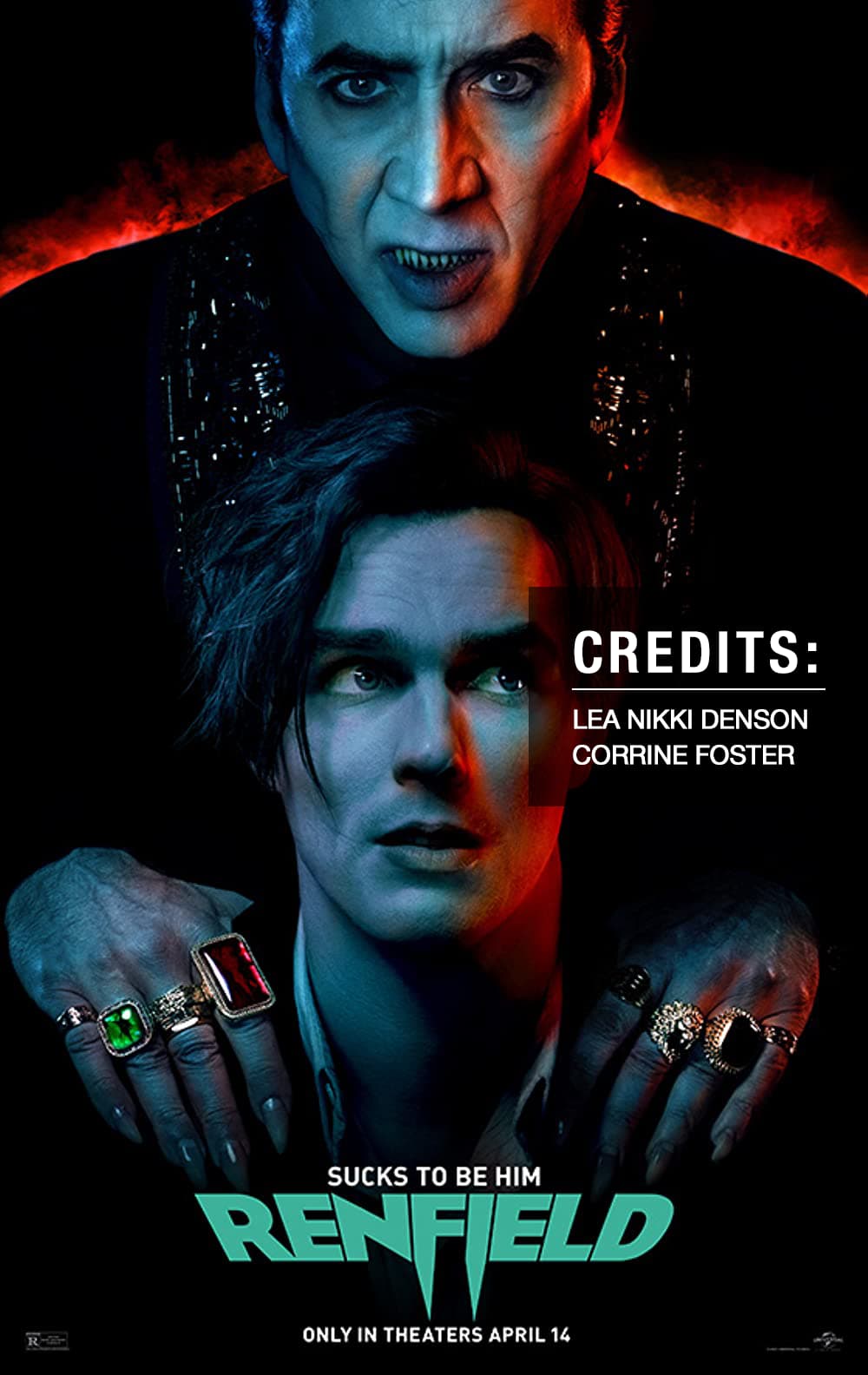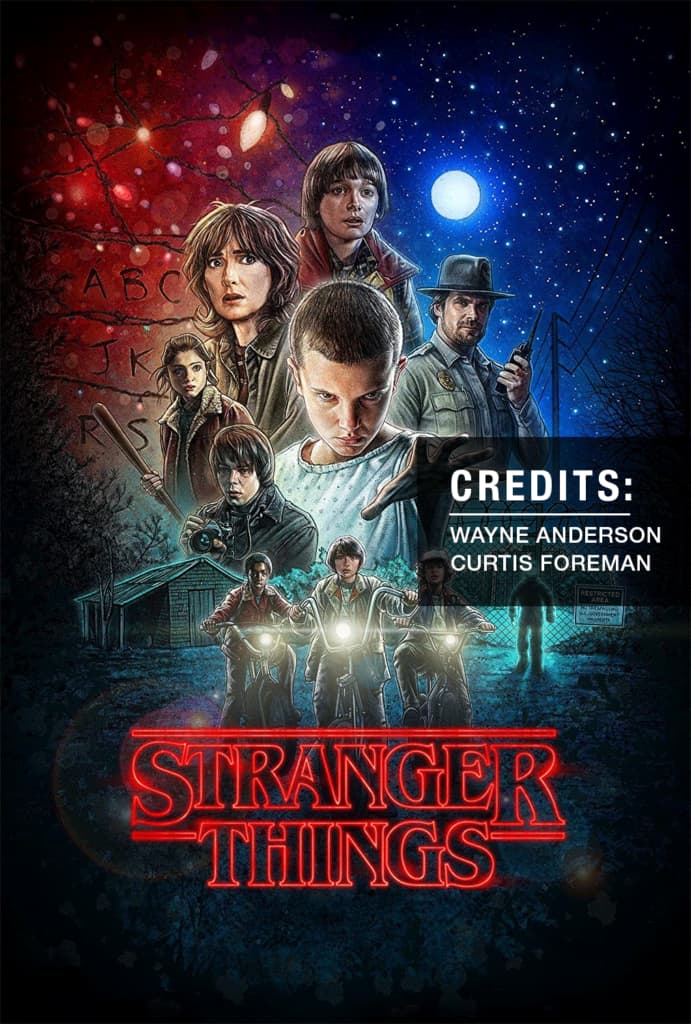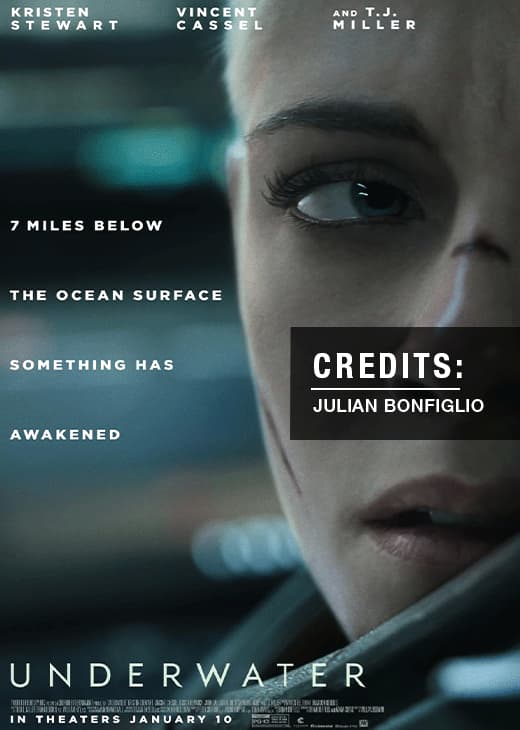When an actor walks on set with a prosthetic so lifelike that it moves, creases, and blends seamlessly into their skin, you’re witnessing more than just talent – you’re seeing anatomy at work.
For SFX makeup artists, learning human anatomy is not just an add-on skill – it’s foundational. Especially in prosthetic makeup, understanding what’s beneath the surface allows you to build effects that are not only believable but visually striking and functionally sound.
In this blog, we’ll explore why anatomy matters in special effects makeup, how it influences your sculpting and prosthetic work, and how you can start integrating anatomical knowledge into your creative process.
Why Anatomy Isn’t Just for Doctors?
When we think of anatomy, we usually picture doctors and medical students, but in special effects makeup, understanding human anatomy is just as important.
Why?
Because SFX makeup artists work with the human face and body as their canvas, especially when designing and applying prosthetics.
To make a prosthetic look realistic, it has to follow the natural shapes beneath the skin, like bones, muscles, and fat pads. Without knowing where these structures are or how they move, the final effect can look fake or stiff.
So, while doctors study anatomy to heal the body, makeup artists study it to recreate it, believably and artistically. From aged characters to monsters and trauma injuries, knowing anatomy helps bring every illusion to life on screen.
Common Mistakes Artists Make Without Anatomical Knowledge
Skipping anatomy study can lead to several issues in prosthetic makeup, many of which might not be obvious until you see the final result on camera. Here are some common mistakes that happen when artists don’t understand the structure beneath the skin:
1) Aspiring Artists Often Sculpt Floating Prosthetics
When a prosthetic doesn’t follow the natural curves of the face or body, it can look like it’s just sitting on top, almost like a sticker. This happens because the artist didn’t shape it to match the underlying bones and muscles. This leads to edges that lift away from the skin, catch unwanted shadows, and appear fake on camera.
2) Many Beginners Accidentally Block Facial Movement
If a prosthetic is placed over an area with lots of facial movement, like the eyebrows or mouth, without considering which muscles are involved, it can block the actor’s ability to express emotions. This makes the character feel stiff or lifeless.
3) Facial Sculpts Can Appear Bloated or Lifeless Without Anatomical Reference
When the foundation of a sculpture isn’t built on real bone structure, like the zygomatic arch, jawline, or brow ridge, the result often looks swollen, flat, or cartoonish. Even with great texture work, a lack of form beneath the surface makes the entire piece feel unnatural on camera.
4) Incorrect Injury Placement
Real injuries follow certain lines based on how the skin stretches and where muscles move. If a cut or bruise is placed in the wrong direction or spot, it won’t look believable. For example, a slash that goes against the grain of the skin might look more like a painted line than a real wound.
5) Ignoring Structure Makes Creature Makeup Look Rigid
Even fantasy creatures need to feel real. If you ignore anatomy completely while designing a creature, it may look too cartoonish or plastic. Good creature designs are often based loosely on real human or animal anatomy so that they can move, bend, and stretch in a way that makes sense.
How Different Layers of Anatomy Shape Your Sculpting Work?
In special effects prosthetic sculpting, anatomy is the blueprint for everything you build. Understanding how the body is layered helps you sculpt prosthetics that move realistically, fit naturally, and hold up on camera. Each layer – bones, muscles, fat pads, and skin- plays a different role in making your work believable.
A. Bones define the form and proportions of the face and body
When sculpting a prosthetic, especially one that covers large areas like the cheek or forehead, bone landmarks such as the zygomatic arch (cheekbone), mandible (jawline), and brow ridge become your sculpting guides.
Ignoring them often results in prosthetics that look flat, unbalanced, or simply “off” under lighting.
B. Muscles give your prosthetic work motion and structure.
They affect surface contours and control how the face or body moves during performance. For example, covering the orbicularis oris (mouth area) or orbicularis oculi (around the eyes) without sculpting for movement can lead to restricted expressions or stiffness.
When you understand the underlying muscle groups, your prosthetics move naturally with the actor’s expressions, essential for realism in both emotional and action-heavy scenes.
C. Fat pads add volume and softness to the face.
They vary by age, gender, and even individual features, which makes them crucial for sculpting age transitions or body-type transformations.
Missing this layer often leads to prosthetics that look overly sharp, hollow, or unnaturally smooth, lacking the organic fullness of real human features. When done right, fat distribution gives your sculpts the subtle dimension needed to make characters feel lifelike, not artificial.
D. Skin and Tendons
The skin is the final layer your sculpt needs to mimic, but what happens beneath it – like tendons and tension lines- determines how that surface behaves. Skin doesn’t just stretch randomly. It folds, wrinkles, and responds to movement in very specific ways.
Understanding skin flow and tendon pull is essential when designing scars, burns, or stretched skin effects. Without this knowledge, your details may look misplaced or behave unnaturally once the actor moves.
Each of these layers is connected, and knowing how they interact is what separates average work from professional-grade prosthetics. As you grow as a makeup artist, learning anatomy gives you the creative control to sculpt smarter, faster, and more believably.
See How Movie Makeup Comes To Life At Cinema Makeup School –
How Anatomy Strengthens 3D and Digital Sculpting in SFX?
Digital sculpting tools like ZBrush give artists incredible freedom to create complex prosthetics, maquettes, and character designs. But no matter how advanced the software is, strong results still depend on a solid understanding of anatomy for 3D sculpting.
When artists ignore anatomical structure, even highly detailed digital models can look unnatural. Features may seem overinflated, stiff, or disconnected from real movement. This becomes especially obvious during close-up shots or animation, where a lack of muscle flow or bone reference breaks the illusion.
What makes anatomy so important in the digital process is how it allows the artist to sculpt with intention. Instead of guessing where forms should sit or how they should flow, artists with anatomical knowledge can make confident design decisions from the very first stroke.
This not only speeds up the sculpting workflow but also reduces the amount of cleanup, revisions, or re-topology needed later. When a digital model is built on real anatomical landmarks, it holds up better during mold-making, fitting, and even animation retargeting.
Important Note: Many aspiring special effects makeup artists wonder if they can learn human anatomy for sculpting prosthetics on their own, but the truth is, professional guidance makes all the difference. At Cinema Makeup School, we don’t just teach SFX makeup; we help you master the anatomy behind it so your prosthetics look and move realistically.
As one of the most respected SFX makeup schools, we’re proud of what our students say about us. Just take a look at our Google Maps reviews to see why so many artists choose to train here.
Keep Learning With These Guides:
What Are Prosthetic Masks in Special Effects Makeup?
Essential Special Effects Techniques for Aging Makeup
How 3D Printed Prosthetics Are Revolutionizing Movie Makeup?
Career Benefits of Learning Anatomy
Understanding anatomy isn’t just a creative advantage; it’s a career booster.
- Stand out to employers by delivering realistic work that needs minimal adjustments.
- Collaborate more effectively with directors, costume, and lighting teams.
- Expand your creative range with believable trauma, age, and creature effects.
- Work faster and smarter with reduced material waste and stronger first-time results.
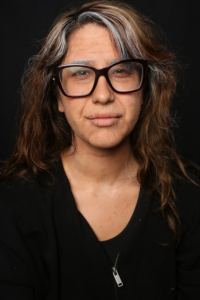
Interested in joining us? You can schedule a tour of our campus in Los Angeles, California, or simply visit our website and connect with our chatbot for any questions you may have. We’re here to help you take the next step in your makeup career – with skill, structure, and confidence.
